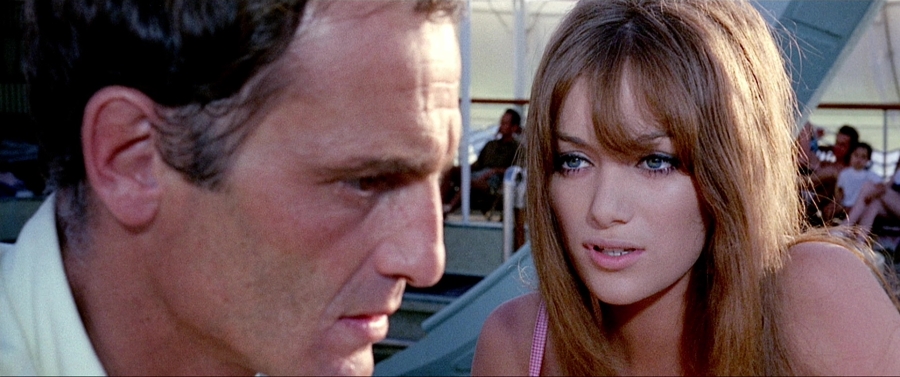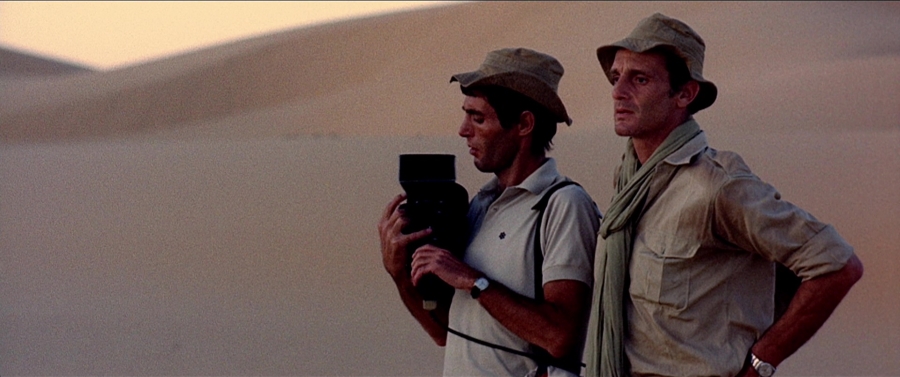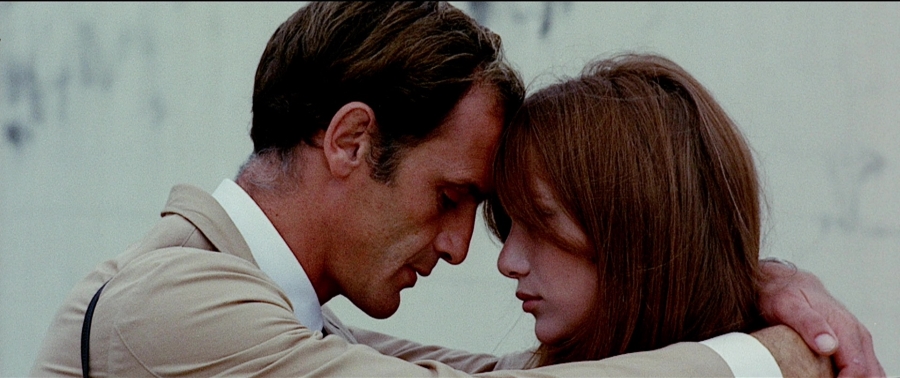THE WILD EYE
Directed by Paolo Cavara. 1967. Italy.

More than a decade before Ruggero Deodato took to the jungles to film his anti-Mondo masterpiece CANNIBAL HOLOCAUST, former Jacopetti associate Paolo Cavara had a go at tackling the argument with THE WILD EYE, a 1967 drama about an ambitious, cynical director who plunges his crew and lover into constant danger and depravity in order to collect good material for his documentary. Cavara was co-director on Jacopetti's first blockbuster success, 1962's MONDO CANE. MONDO CANE kicked off a series of films, known nowadays simply as Mondo films, that mixed the standard, harmless travelogue with scenes of graphic violence, bizarre cultural practices and softcore sex, creating what can only be called an exoticized freak show. The cultural impact of MONDO CANE cannot be exaggerated. It was a phenomenon and Jacopetti, an opportunist of the most extreme kind, knew he was on to something.
Cavara worked with Jacopetti twice more. He co-directed Jacopetti's second Mondo film, the 1963 nudie cutie-esque WOMEN OF THE WORLD, and the long-forgotten Mondo WITCHDOCTOR IN TAILS in 1966. Cavara and Jacopetti parted ways before filming completed on the most notorious of all Mondo films, AFRICA ADDIO. It was probably the best move Cavaro could have made. AFRICA ADDIO was a molotov cocktail of politics, racism, and violence which proved too much to handle for the filmmakers. Jacopetti was placed on trial for allegedly instigating violence and paying for executions. The film was banned, censored, picketed, and protested all over the place and the stigma it created was never fully shaken off by its makers. Cavara, on the other hand, went on to direct several well-received and profitable pictures, free of the stain AFRICA ADDIO and its grotesque follow-up ADDIO ZIO TOM left on the careers of his former associates.
But before Cavara moved on to other things, he made THE WILD EYE, a thinly veiled expose of Jacopetti and Prosperi, and their twin roles of documentarians and provocateurs. It features Philippe Leroy as Paolo, a documentary filmmaker on the hunt for extreme scenes for his latest unnamed film. We first meet Paolo and his cameraman Valentino as they race through the desert in a jeep with a few travel companions. They are chasing a gazelle in hopes of making the animal's heart explode. One of their companions, a beautiful young woman named Barbara, makes her feelings known on the matter. She begs them to stop. "I can't stand to see that poor animal suffer", she protests. "Then close your eyes", she's told.

Once the race stops, they find their jeep will not start. As they trek through the desert in hopes of finding the trail back to civilization, they stumble across the carcass of an animal. Paolo has Valentino film the bones then swing the camera around to film the disgusted looks of their companions. As the group slowly succumbs to exhaustion, Paolo has an idea. He has Valentino turn the camera on, giving each of the group a chance to deliver their final farewells to the world if they wish to do so. A little while later, they are rescued, something which doesn't come as a surprise to either Paolo or Valentino.
After a brief set-up in which Paolo convinces Barbara to leave her husband and come with him to Singapore, the film really kicks into gear and the anti-Mondo message of the film takes hold. The narrative, in many ways, resembles that of the Mondo film itself. We move from location to location, always taking in the strangest sight the location has to offer. We first take a romantic stroll with Paolo and Barbara through a Japanese park full of grotesque wood figures depicting all manner of terrible tortures. We see Paolo and Valentino filming deaf-mute prostitutes using sign language to set up deals with their prospective Johns. They travel to a drug rehabilitation clinic, offering the man in charge money in exchange for allowing him to film the helpless drug addicts being whipped and beaten with boards.
He tries to talk a Buddhist priest into setting himself on fire in protest of the Vietnam War. Later, they travel to a Viet Cong stronghold and find themselves threatened with violence, only managing to escape by convincing the soldiers that they are Italian and not American. The film ends with the ultimate example of Paolo's extreme opportunism. The film crew are tipped off about a terrorist bombing that will happen at midnight in a bar frequented by American troops. Instead of telling the authorities or alerting the patrons, Paolo and his cohorts set up their cameras, waiting for the carnage.
Through all of this, there is a feeling of deep cynicism and nihilism. Paolo is a man motivated solely by ego. His attraction to Barbara is borne out of a need for a character in his film, a counter-point to all the nastiness he hopes to film - "You'll be the straight-faced Anglo-Saxon woman who is always being shocked" he tells her. Whether or not their romance means anything to him doesn't really become clear until the final minute or so of the film, but even these final moments, though deeply sad and troubling, are laced with cynicism. Their relationship provides THE WILD EYE with a bit of a dramatic backbone, but the character of Barbara - played by the gorgeous Delia Boccardo - is a bit too perfunctorily sketched, and, as she is the only person available for audience identification, the dramatic moments don't quite come off as genuine.

But that is the least of the film's concerns. At its heart is the blistering criticism of Jacopetti and Prosperi's working techniques and their growling misanthropy. It's here where THE WILD EYE does its best work. I think in order for this film to work well, you will have to be somewhat familiar with the Mondo films made by the two men in the 1960s. So many of the sequences from THE WILD EYE are pulled from their lives or explicitly reference their films. While there is no direct comparative scene in any of Jacopetti and Prosperi's films, the opening scene of the men menacing the gazelle perfectly summarizes the two men's feelings towards utilizing animal suffering for shock effect. The same can be said for the beatings endured by the drug addicts at the rehabilitation center.
When Paolo and his crew are confronted by angry Viet Cong soldiers, the scene directly references a moment from AFRICA ADDIO. The most damning scene in the entirety of THE WILD EYE comes during an execution sequence. As the military prepares to execute a man, Paolo frantically tries to get the soldiers to move the execution to a new site in order to make the gruesome proceedings more photogenic. There is a scene in the final third of AFRICA ADDIO which looks suspiciously just like this execution sequence in this film. Jacopetti might have been acquitted in his trial, but Cavara seems to have little doubt that Jacopetti was, in some way, complicit - if not explicitly involved in - staging an execution for the sake of his film.
You don't really need a film like THE WILD EYE to tell you what kind of men Jacopetti and Prosperi were. Their films speak for themselves. But having Paolo Cavara, a man intimately involved with this particular kind of film and its creators, at the helm of this film lends all of the proceedings great credibility. Whether or not it is an accurate representation is up to you to decide. Separated from the controversy of the Mondo films, THE WILD EYE loses a bit of its power but taken as a piece of commentary, or when seen through the shockumentary lens, it's a minor masterpiece.